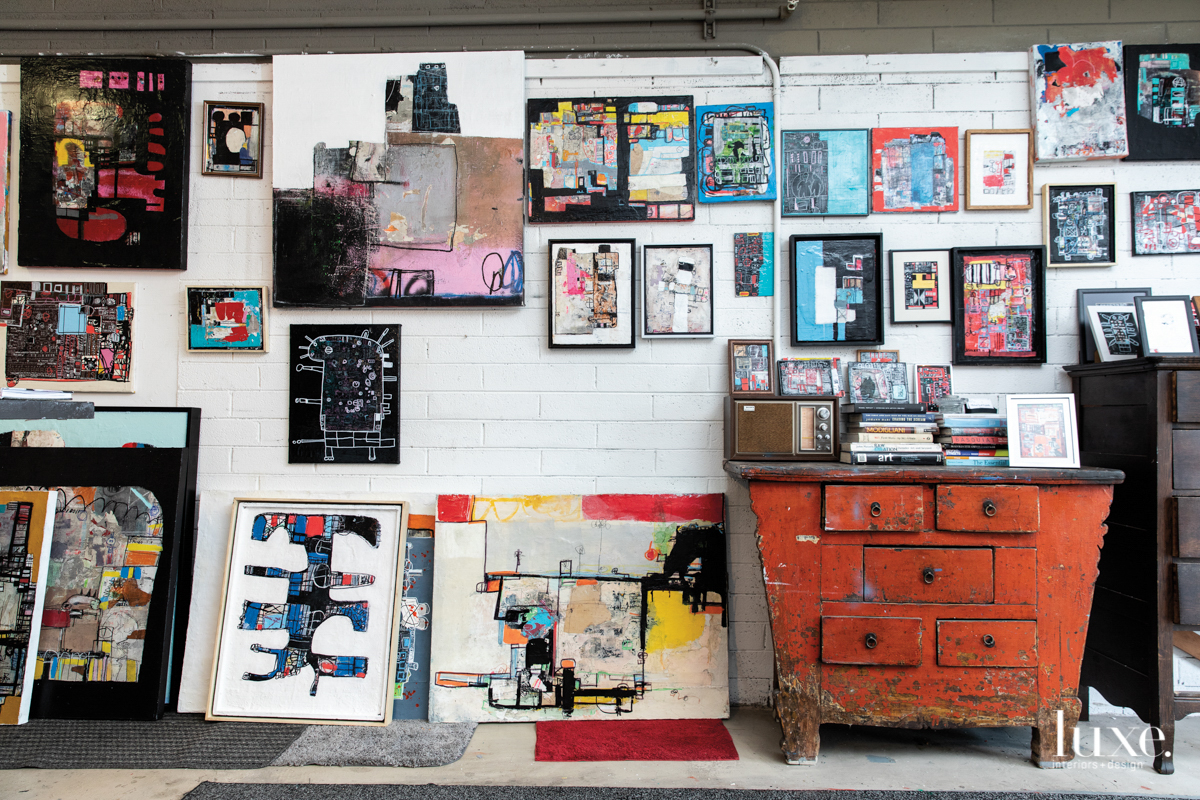
Viglietta’s studio is filled with both in-progress and finished pieces, including Antelope Hunter and Abstract Photography (along the floor, center and right), and, directly above them, Elmo.

Artist Michael Viglietta at work on one of his paintings.
For nearly three decades, Arizona-based artist Michael Viglietta worked in film production, serving as an assistant director for blockbuster movies such as Basic Instinct, Independence Day and Iron Man. While becoming an abstract expressionist artist may seem like quite the career change, Viglietta points out that film provided him with excellent experience for his follow-up act. “As a director, your whole day is spent putting things into the frame, whether it’s cars, people or lighting,” Viglietta says. “I learned a lot about what looks good.”
And if not for his film career, Viglietta may have never pursued art professionally. He kept notebooks with him on sets, jotting down ideas or making sketches and diagrams during downtime. Eventually, he began to rip out the pages and incorporate them into paintings, which he created in the makeshift studios he set up in his hotel rooms. Word got around, and occasionally production designers would buy or rent them—some can even be seen in the background of the productions he’s worked on, such as Ant Man.
Ironically, Viglietta’s approach to film differs greatly from his process when it comes to his current art. While a film unfolds sequentially, for his mixed-media pieces Viglietta layers the “stills”—ranging from drawings to blueprints to plaster—atop one another between coats of paint. After applying a multitude of layers, he then either hoses down the work or leaves it in the rain, a technique that stems from when he accidentally left one of his pieces in the rain many years ago. After the works dry, Viglietta starts all over again, building up additional layers before finally eroding portions to expose what lies beneath. “I’ll bury a drawing almost like an artifact, and then I do an archaeological dig to uncover it,” he says. “That’s how I find my way into the painting.”
Viglietta’s works fall into what he calls “pods,” each with its own language, one piece informing the next. In one series, for example, he scraped away paint to create animal-like shapes atop a solid-color backdrop. Another series features forms that resemble futuristic cities. “Somewhere along the way, the painting tells me where it wants to go,” he says.
Just as he scrapes the paint off his canvases, Viglietta found shedding a high-stress career in film production brings a greater satisfaction. “I worked in a job where somebody would say, ‘Go to Toronto,’ and then I’d leave for six months,” he says. “Now I’m more self-driven, and that’s a wonderful feeling.”
Finding a focus in his art also fuels him. “My life is all about painting,” he says. “When you make something out of nothing with your hands and someone buys it, it’s very satisfying.”